|
|
NYSG's Social Media Review: Early August 2017
By Paul F on Aug 2, 2017 at 4:25 PM
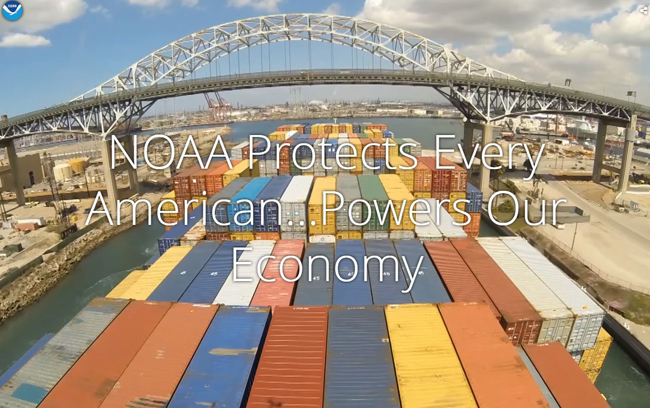
"NOAA Protects Every American…Powers Our Economy" is the latest interactive story map from Sea Grant's federal parent agency, the National Oceanic and Atmospheric Administration.
The story map illustrates both the enormous breadth and scope of NOAA’s work, and the scale to which this work contributes value to the U.S. economy.
NOAA, in fact, is one of America's most important economic engines, and plays a critical role across a number of economically vital industries.
"I am grateful to Monica Grasso, NOAA chief economist, NOAA economists Jeff Adkins and Rajendra Poudel, and staff across NOAA who contributed to the story map," says Benjamin Friedman, Deputy Under Secretary for Operations, performing the duties of Under Secretary of Commerce for Oceans and Atmosphere and NOAA Administrator. "Thanks as well to everyone in our NOAA community. NOAA’s reach is so expansive because of your talented and determined efforts."
And for over 50 years, NOAA's Sea Grant programs nationwide have been putting science to work for America's coastal communities as well.
Read why Sea Grant is a smart investment in our nation's coastal economy via a two-page fact sheet (pdf) and "By The Numbers" one-page stats sheet (pdf).
In New York, check out our own "New York Sea Grant: By The Numbers" one-page stats sheet (pdf), "NYSG's Return on Federal Investment" two-page fact sheet (pdf), "What is NYSG?" two-page introduction to our state program (pdf) as well as our year-by-year "Success Stories," www.nyseagrant.org/successstories.
For the more visually-inclined, there is both a 30-second trailer and 10-minute video highlighting how Sea Grant has been providing science to serve America's coasts for over 50 years: http://ow.ly/vjZX30auBxE.
Top 16 Trending News Stories from NOAA's New York Sea Grant (NYSG) ...
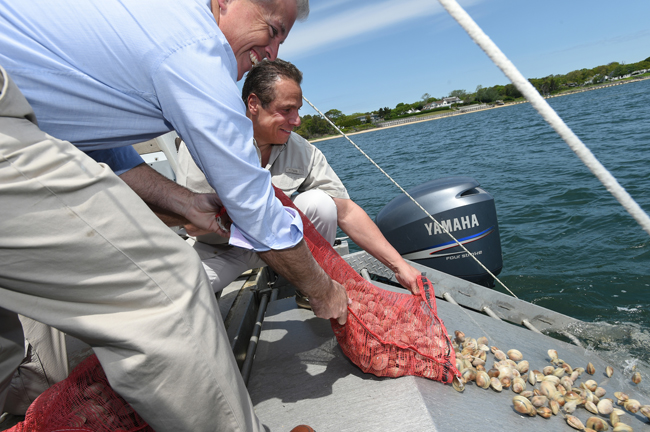
(1) NEW NYS MONIES TO SUPPORT SEA GRANT >>> New York Governor Andrew Cuomo announced in early June at Stony Brook Southampton that the State would provide an additional $2.05 million to NYSG for the purpose of water quality research and improvement: seagrant.sunysb.edu/articles/r/2733.
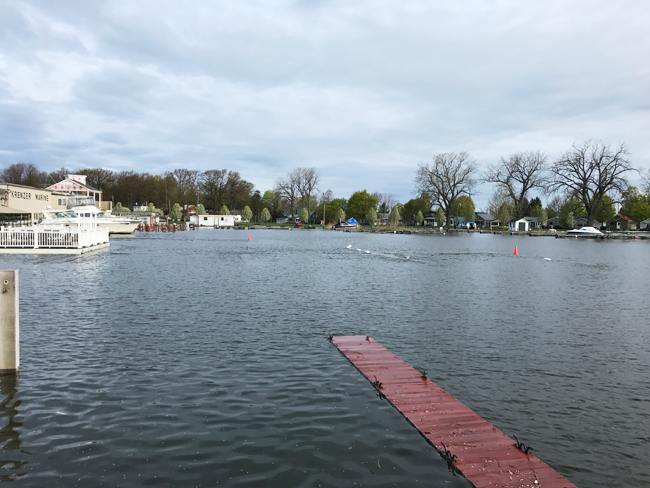
(2) LAKE ONTARIO COASTAL FLOODING SURVEYS >>> Following months of high water in Lake Ontario and the St. Lawrence River communities, NYSG is asking property and business owners to provide input. These surveys, being conducted through a NYSG-funded Cornell University study, are in response to stakeholder requests for a standardized method to collect data on the impacts of high water levels on waterfront properties: Lake Ontario | seagrant.sunysb.edu/articles/r/2727; St. Lawrence River | seagrant.sunysb.edu/articles/r/2740.
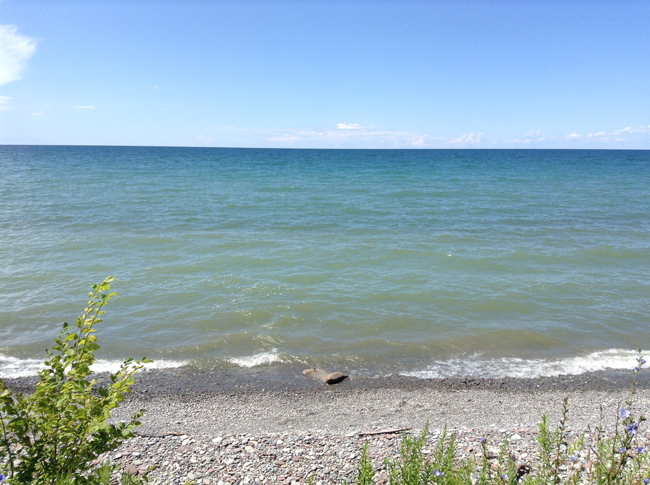
(3) SMALL GRANT MONIES AVAILABLE >>> Proposals are being accepted through September 22nd for $200,000 in grants to fund Great Lakes Resilience projects. Monies for the grants, which each can be up to $25K, are being made available through a partnership between NYSG and the New York State Department of Environmental Conservation: seagrant.sunysb.edu/articles/r/2746.
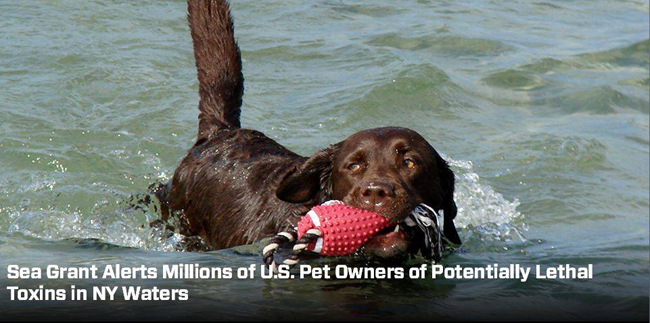
(4) A SAFER SWIM FOR YOUR PET >>> New York State Parks is partnering with NYSG to educate dog owners of the potential impacts harmful algal blooms could have on their water-loving four-legged family members. As part of a pilot program, several state park locations throughout the state will feature the informative materials through this summer: seagrant.sunysb.edu/articles/r/2748.
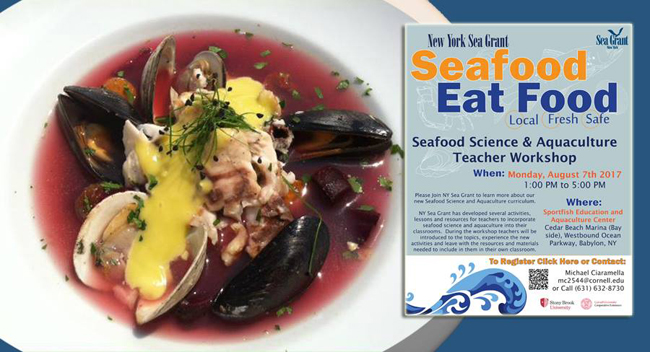
(5) SEAFOOD WORKSHOP >>> Registration is open for our free Seafood Science and Aquaculture teacher workshop on Monday, August 7th. Educators who attend this afternoon event - to be held from 1 - 5 pm at the Sportfish Education and Aquaculture Center at Cedar Beach Marina in Babylon, NY - will learn about Sea Grant's new related activities, lessons and resources that can be incorporated into existing science curricula: Flyer | ow.ly/nMMC30dViHh; Sign-up | ow.ly/bGAw30dViQT.
This is the third in the "Seafood Eat Food" series. In mid-June, NYSG conducted a Sustainable Seafood workshop, a day on Long Island's North Fork featuring a visit to a shellfish hatchery and oyster farm (Flyer | ow.ly/sz2h30auBFL). The first one, "Sea Grant’s Response to a Rise in Consumer Engagement," was held in November 2016: seagrant.sunysb.edu/articles/r/2694.
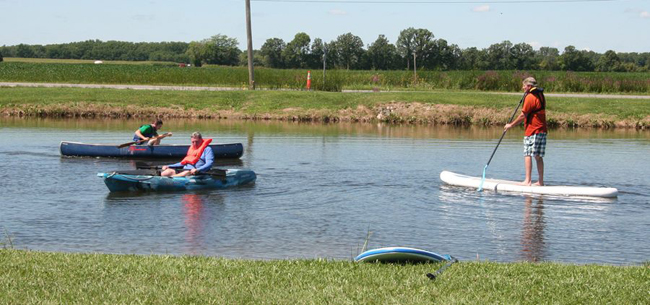
(6) A DECADE OF CLEAN AND SAFE BOATING >>> NYSG launched the 10th anniversary edition of its "Discover Clean and Safe Boating" educational campaign in late June: seagrant.sunysb.edu/articles/r/2741. The award-winning educational program has engaged more than 750,000 in how to be legal, safe and environmentally-friendly on NY waters since 2008.
UP NEXT: Water safety demonstrations by NYSG, the U.S. Coast Guard Auxiliary and New York State Parks Marine Services Bureau will be offered three times daily in the farm pond at the August 8-10, 2017 Empire Farm Days in in Seneca Falls, NY: seagrant.sunysb.edu/articles/r/2741.

(7) HURRICANE SEASON BEGINS >>> June 1st marked the start of 2017's Atlantic hurricane season, which the National Oceanic and Atmospheric Administration (Sea Grant's federal parent agency) predicted would be above normal. Are you prepared? seagrant.sunysb.edu/blog/39.

(8) DON'T BE BLIND TO THE SIGNS >>> How are shoreline property owners coping with bluff erosion? This dramatic problem in New York’s coastal regions and waterways is the focus of a newly-released half-hour long video featuring a recently-retired NYSG senior coastal processes specialist: seagrant.sunysb.edu/articles/r/2745.
ALSO, this Fall NYSG is slated to announce new staffers this fall for several extension positions, including coastal processes specialists for both New York's marine and Great Lakes waters. Another will be a educator for the program's partnership with the Long Island Sound Study. More on these topics, respectively, at: www.nyseagrant.org/lisound, www.nyseagrant.org/marinecoastal, www.nyseagrant.org/glcoastal.
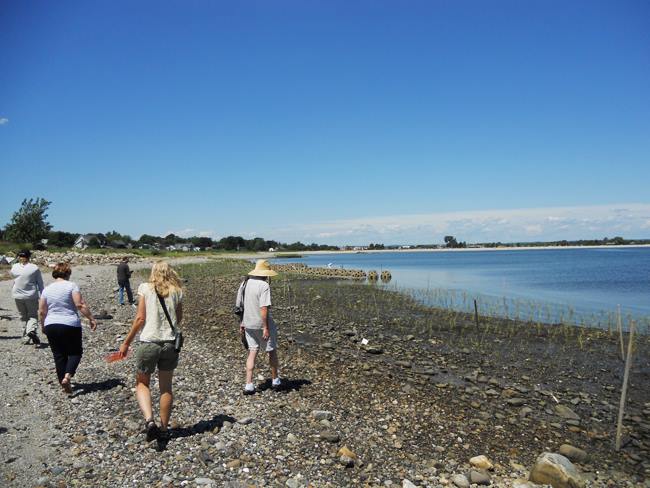
(9) SOUND RESEARCH, STEWARDSHIP >>> In mid-April, over $676,000 was awarded by Sea Grant programs in New York and Connecticut for three two-year Long Island Sound Study (LISS) research projects: seagrant.sunysb.edu/articles/r/2710.
ALSO, LISS reminds that there are a handful of opportunities to volunteer with them and partner organizations through the Fall in New York and Connecticut to help restore and protect Long Island Sound: ow.ly/QyL430auBNQ.
As for your everyday, learn more about "What You Can Do" to protect waterways with resources from LISS: ow.ly/sm5N30auE5D.
In mid-July, LISS began a social media campaign that will run through National Estuaries Week in late September called #DontTrashLISound. Keep tabs via https://twitter.com/LISStudy and www.facebook.com/longislandsoundstudy.net.
NYSG offers home gardeners tips on how to be more water-wise with their landscaping practices in a revised, full color guide. These everyday efforts can help reduce threats to water quality: ow.ly/N7oZ30auE4h.

(10) NYC CLIMATE FORUM >>> Late May brought us "Beat The Heat," the latest in the Climate Forum Series, a NYC-centric discussion sponsored through a partnership between NYSG and the Science and Resilience Institute at Jamaica Bay: seagrant.sunysb.edu/articles/r/2725.
ALSO, this past spring two Cornell University magazines put the spotlight on Big Red's initiatives in New York City, which include NYSG's efforts in and around Jamaica Bay: seagrant.sunysb.edu/articles/r/2743. More on Jamaica Bay, including a monthly podcast, at www.nyseagrant.org/jamaicabay.
AND: For one week in mid-July NYSG staffer were at Columbia University for "#SeaLevel2017: Regional Sea Level Changes and Coastal Impacts - An International Conference." NYSG conducted a related Twitter campaign on behalf of NOAA, the tweets from which can be viewed between July 10th and 14th at www.twitter.com/nyseagrant.
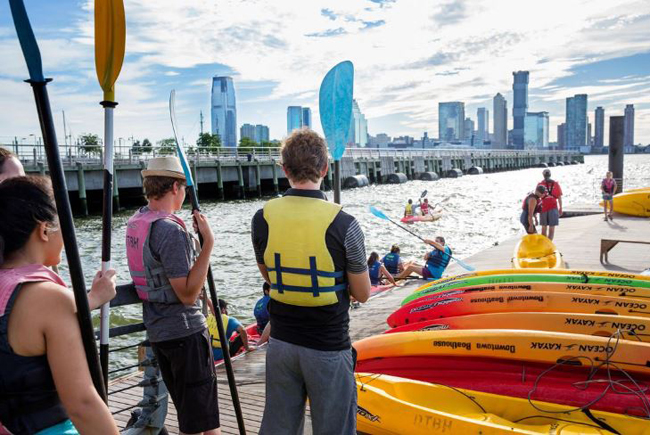
(11) SHIPWRECKS SURFACE IN NYC >>> For the first time, NYSG's traveling "Great Shipwrecks of NY’s ‘Great’ Lakes" display came ashore in New York City as part of the summer's "The Hidden Hulks of New York Harbor" Exhibit aboard Lilac (Hudson River Park’s Pier 25). The exhibit, which launched just before Memorial Day, had an extended stay through mid-July: seagrant.sunysb.edu/articles/r/2726.
(12) CITY OF WATER DAY >>> NYSG's estuary education, coastal resilience and underwater exploration efforts were all highlights of The Waterfront Alliance's 10th Annual NYC City of Water in mid-July: seagrant.sunysb.edu/articles/r/2744.
ALSO, in mid-May NYSG joined hundreds of other partners at The Waterfront Alliance's annual conference at Hudson River Park Pier 40 in New York City. More on Sea Grant's climate and severe weather efforts at seagrant.sunysb.edu/articles/r/2714.
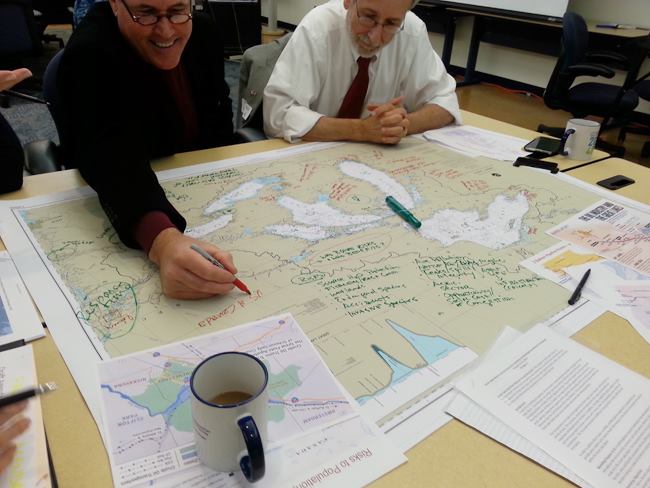
(13) CRUDE MOVE SYMPOSIUM >>> A first-of-its-kind open-to-the-public symposium held in downtown Cleveland in early June provided an opportunity for Great Lakes stakeholders to better understand the complexity of how crude oil moves by rail, pipeline, highway and water and the risks involved: seagrant.sunysb.edu/articles/r/2736. NYSG conducted a related Twitter campaign, #CrudeMoveSymposium, the tweets from which can be viewed between June 8th and 9th at www.twitter.com/nyseagrant.
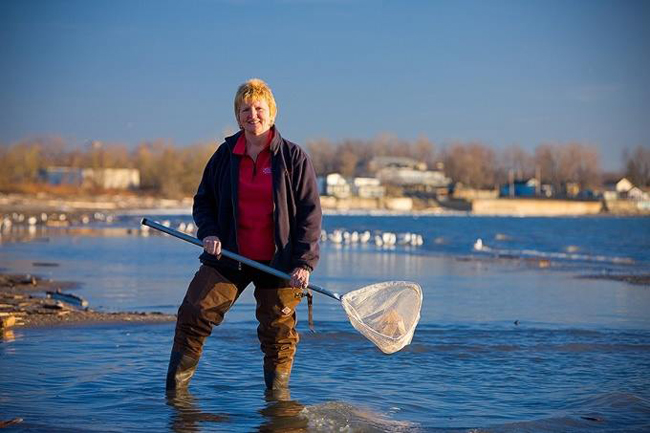
(14) TAKE IT BACK, CLEAN IT UP >>> For National Prescription Drug Take Back Day in late April, NYSG partnered with the U.S Drug Enforcement Agency to offer some environmentally-friendly spring-into-cleaning tips for your medicine cabinet: seagrant.sunysb.edu/articles/r/2711. More on this topic at www.nyseagrant.org/unwantedmeds.
ALSO, in late April NYSG co-sponsored a free screening of the documentary film "A Plastic Ocean" at Cornell Cinema in Ithaca, NY. The film investigates how our addiction to plastic is impacting the food chain and how that is effecting every one of us through new and developing human health problems (Trailer | www.plasticoceans.org/watch-trailer). More from Sea Grant on microplastics (smaller than five millimeters in size) at www.nyseagrant.org/microplastics.
(15) STATE OF LAKE ERIE >>> NYSG hosted its annual State of Lake Erie meeting in early April, with featured presentations on the status of cold and warm water fish communities and an update on the eastern basin's Lake Sturgeon, once the biggest predator in the Great Lakes that, following a steep decline, is seeing re-establishment efforts through established spawning sites.
"This was my 24th year of hosting State of the Lake meetings," says Helen Domske, NYSG's Coastal Education Specialist, "and I'm proud to say that I've offered a diverse and interesting meeting each year." The key to doing that, she adds, is also thanks to the partners: "It’s all about strong partnerships." Speakers were from the New York State Department of Environmental Conservation, U.S. Fish and Wildlife Service and University at Buffalo.
ALSO, this spring Domke was the recipient of the 2017 Henry J. Kord Conservation Award (seagrant.sunysb.edu/articles/r/2735). She was also profiled by the University at Buffalo (seagrant.sunysb.edu/articles/r/2742).
(16) E-NEWS SIGN-UP >>> Check out an archive of our newsletter, NY Coastlines / Currents, the latest of which was e-distributed Summer 2016: www.nyseagrant.org/nycoastlines. While you're there, you can also sign up (if you haven't already done so) to receive our next issue, slated for release in Fall / Winter 2017.
Top 12 Trending News Stories from NOAA and Sea Grant partner organizations ...
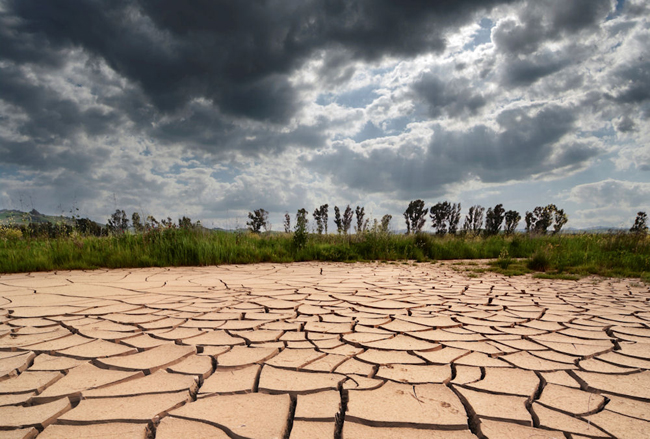
(1) CLIMATE CHANGE ONLINE COURSE >>> Cornell Cooperative Extension is offering a free online course, "Climate Change Science, Communication, and Action," from September 11-30th for its extension educators, master volunteers and partners in the U.S. Northeast region. For more info, see the syllabus (pdf) and registration details.
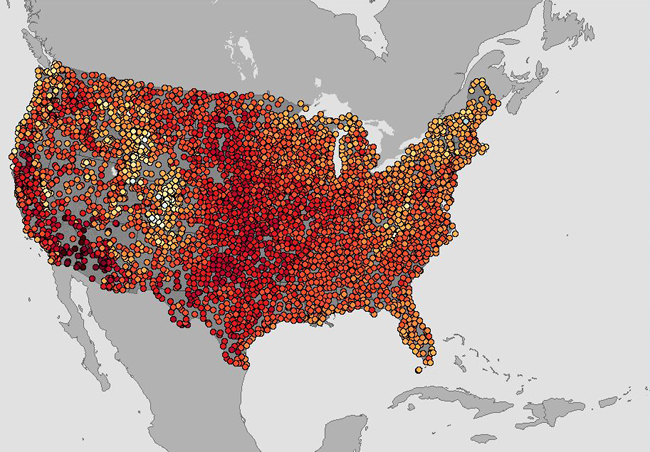
(2) LONG HOT SUMMER >>> When did your area have it's record-hottest summer day in history? Click through NOAAClimate.gov's interactive map to find out: http://ow.ly/OTOX30e7c0c.
ALSO: Summer officially began on June 21st, but for meteorologists and climatologists, the season began 20 days earlier. Learn more about the differences between the astronomical and meteorological seasons: http://1.usa.gov/1KvLDqV.
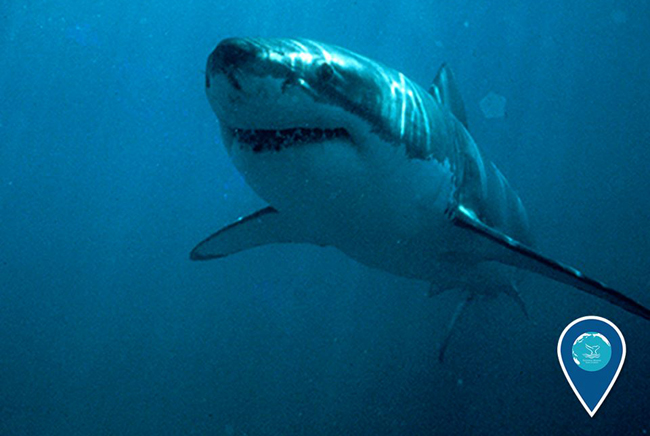
(3) SHARK WEEK REDUX >>> Located off the coast of northern and central California, Greater Farallones National Marine Sanctuary is home to one of the most significant white shark populations on the planet. How much do you know about white sharks? NOAA National Marine Sanctuaries has you covered with video and additional info.
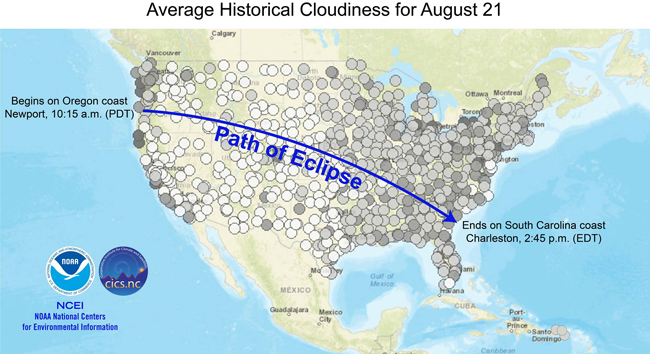
(4) SOLAR ECLIPSE >>> Get ready for the August 21st or #Eclipse2017, when parts of the U.S. will witness a total solar eclipse. Find out what you'll see based on your location (Video). For NOAA weather information, bookmark www.weather.gov/eclipse. For NASA's interactive likely cloudiness map, visit www.ncei.noaa.gov/news/ready-set-eclipse.
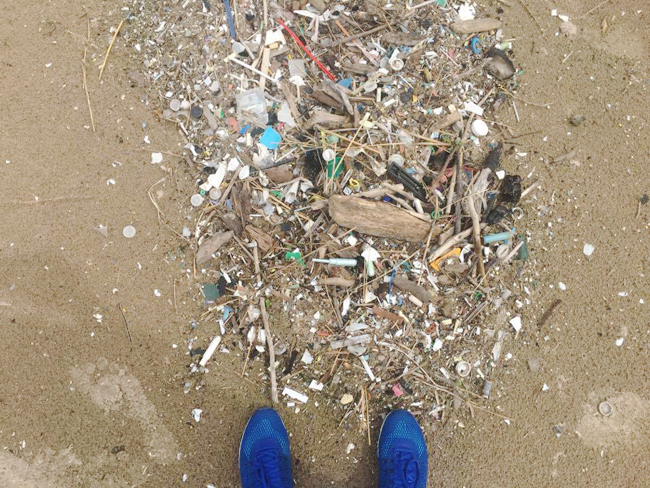
Plastics and other marine debris that had come ashore in late July 2017
on New York's North Sandy Pond beach, which is along the eastern Lake
Ontario shoreline. Photo: Paul C. Focazio/ NYSG
(5) THE PLASTIC PROBLEM >>> Pennsylvania Sea Grant led a team of 10 teachers from Erie, PA and upstate New York in late July a day of learning about water quality, microplastics and other Great Lakes issues. PASG is finalizing a video to document the experiences, which, when released, can be viewed at seagrant.psu.edu. Also, a reporter from Erie News Now shadowed the group and filed this brief video report.
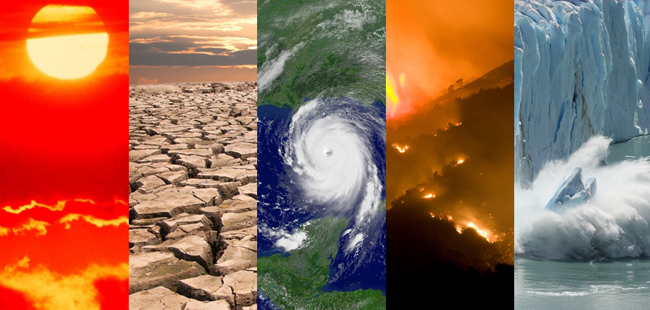
(6) GLOBAL & U.S. CLIMATE >>> A Global climate analysis as of June 2017 was released in mid-July by NOAA's National Centers for Environmental Information-Climate: Globe had 2nd warmest year to date and 3rd warmest June on record. At the poles, Arctic and Antarctic sea-ice coverage remains small: http://ow.ly/FVaS30e7lOf.
ALSO: The U.S. saw 2nd warmest year to date on record and warmer-than-average June: http://ow.ly/Eje830e7lIt. NOAA's National Weather Service says that August through October is forecast to be warmer than usual for the entire country.
AND: According to NOAA's Drought Monitor, exceptional drought—the worst category—is now affecting over 74,000 people in three states-North and South Dakota and Montana. More via NOAA National Centers for Environmental Information-Climate: http://ow.ly/ALlU30e7lDO.
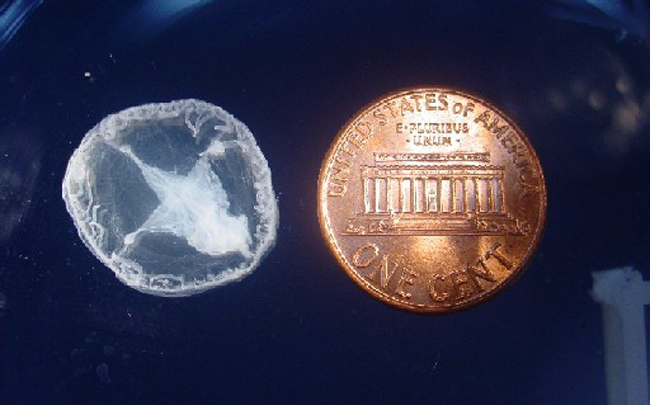
(7) NON-NATIVE JELLIES IN ERIE >>> The freshwater jellyfish recently found in Lake Erie is not an anomaly, says Pennsylvania Sea Grant. The non-indigenous species jellies, which are native to China's Yangtze River Valley, have been sighted for many years.
But when The Buffalo News checked in with NYSG's Helen Domske to see how far the species may have spread in the lake, she said, “I do know that the jellyfish have been spotted in Pennsylvania waters and around the Bass Islands in the western basin since the 1970s, but I have not heard of anyone around here reporting them” (http://ow.ly/NQb630e6XyH).
For background, see a U.S. Geological Survey-produced fact sheet (http://ow.ly/3gBf30e6XIX). Sightings outside of PA, and those within Pennsylvania, should be reported to the USGS (http://ow.ly/LNVw30e6XVn).
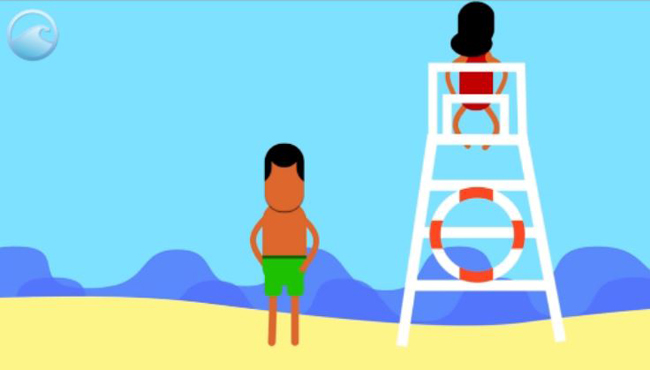
(8) SWIM SAFELY >>> Know how to spot rip currents and how to survive if caught in one — you could save your own life or the lives of others. More from NOAA Ocean Today (http://ow.ly/zneF30e7l78) and New York Sea Grant (www.nyseagrant.org/ripcurrents).
ALSO: As NOAA's National Weather Service reminds, there are many ways you can receive weather warnings. Check www.weather.gov for what you can expect today — down to the zip code level.

(9) WHY WE SHOULD CARE? >>> As illustrated in the above infographic from NOAA's National Ocean Service, the ocean produces over half of the world's oxygen and absorbs 50 times more carbon dioxide than our atmosphere. Also, in celebration of June's status as National Ocean Month, here's another saltwater fact: The ocean provides more than just seafood (for which NYSG offers resources at www.nyseagrant.org/seafood); ingredients from the sea are found in surprising foods such as peanut butter and soy milk.
ALSO: Back on land, new research released by NOAA in late April shows that since 1900 plants around the world are using 30% more carbon dioxide: https://go.usa.gov/x5b45.
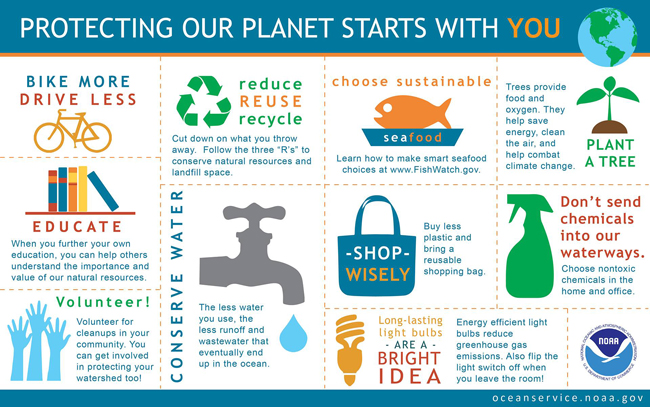
(10) YOU CAN PITCH IN >>> Do you love environmental science? Want to make a difference? Become a NOAA #CitizenScientist — There are lots of volunteer opportunities and ways to contribute: http://bit.ly/NOAACitizenSci.
ALSO: Although Earth Day was in late April, you can protect our planet everyday, as seen in the above infographic from NOAA's Ocean Service and via NOAA's "8 Ways to Keep the Earth Clean," http://ow.ly/7Ini30e7kVw.
For more tips for green living, see NYSG's resources at www.nyseagrant.org/greentips.
One of those tips—an UConn-produced app on do-it-yourself rain gardens—was a NOAA Digital Coast highlight story: http://ow.ly/U4Tp30e7kH9. NYSG has more on water-wise practices in your garden via a recently revised publication: seagrant.sunysb.edu/articles/r/2639.

(11) LIGHT ME UP >>> Light may be detected as far as 1,000 meters down in the ocean, but there is rarely any significant light beyond 200 meters, as illustrated in this infographic from NOAA's National Ocean Service. More light travel facts at http://ow.ly/27Bt30e7kEq.
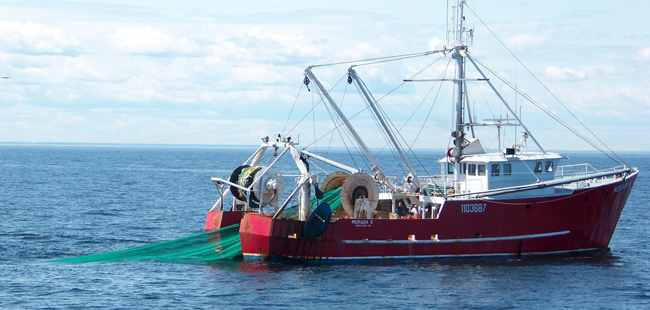
New England commercial fishing trawl vessel NEFSC
(12) PRICEY FISHES >>> A report released in early May from NOAA Fisheries Services shows that U.S. commercial and recreational fishing generated $208 billion in sales, contributed $97 billion to the gross domestic product and supported 1.6 million full- and part-time jobs in 2015 — above the five-year average: http://ow.ly/40Fe30e7kxh.
---
On www.nyseagrant.org ...
- Our "Trending Topics," such as climate change and green tips for coastal living, via a section on our homepage, www.nyseagrant.org.
- For the latest news from NYSG, check out our 'Currents' section, www.nyseagrant.org/currents, as well as our 'by-topic' archives, www.nyseagrant.org/currentsarchive.
- To keep tabs on all of NYSG's coastal science news, follow us on Facebook (www.facebook.com/nyseagrant), Twitter (www.twitter.com/nyseagrant) and YouTube (www.youtube.com/nyseagrant); Subscribe to our free news feeds (click the orange & white icon in the "Follow Us" navigation bar at www.nyseagrant.org); Sign up for our e-list in a few quick clicks at www.nyseagrant.org/nycoastlines. Our flagship publication, NY Coastlines / Currents, is published 1-2 times a year.
|